#The most influential witch in history
Explore tagged Tumblr posts
Text
There have been a handful of shows that have come to me in my life at a time when I needed them most and saved me from myself. If you've been following me for a while you'll know that Revue Starlight is one of them.
So I'd like to talk about another one. In september of 2022, I sat down one morning and finally decided to watch Revolutionary Girl Utena. And I can say with full confidence that this was one of the best decisions I have ever made in my life. Obviously because I got to watch Revolutionary Girl Utena, perhaps one of the greatest serialized animated shows ever made, so massively influential that you can see its DNA in almost any yuri series you can think of.
But also because a week after finishing RGU, feeling like a changed man who had seen the truth of the universe, this aired.

Now, I had been aware that this was going to be a thing for the few months preceding. I have a friend who was very excited for a mainline Gundam series to have a female protagonist for the first time (and when they explained this to me I was very shocked that it had never happened before. You mean to tell me that a franchise old enough to be some people's fathers has never had a female protagonist in its entire history?) I had sort of a passing interest in it. I was sort of on the tail end of my Arknights era, so that had been the fall 2022 show I was looking forward to the most. Hey, if it's good, I'll watch it, I reasoned.
Imagine how I felt opening twitter two years ago tonight to see my entire TL screaming "UTENA IN SPACE???!!!!"
Well, Utena is the greatest thing anyone has ever made. If this is like Utena, it's gotta be worth checking out, right?
I was floundering throughout 2022. I couldn't do the hobbies that I loved because of burnout, I was stuck at home most of the time because I couldn't drive and didn't have a means to leave otherwise, and everything I had planned out or started to look forward to ended up getting cancelled or delayed in some way, so I was robbed of the little exciting things that are supposed to keep me going. I was deeply unhappy and in need of a mental anchor of some kind. And Suletta Sundays proved to be just that.
I loved G-Witch. I've loved the other Gundam things I've seen, too. I'm happy that this show got me into Gundam, because that had been something I'd been meaning to do for a long time. Suletta and Miorine's relationship proved to be the thing that broke me out of the creative rut I'd found myself in, and since the beginning of last year when I started writing SuleMio fic I've measurably improved as a writer. I've made a lot of friends through our shared love (and frustration) with this show, and it's been a long time since I've been able to bond with people in a fandom space this tightly.
For years the bar for how much fun an anime was to watch while it aired had been Love Live Sunshine season 2. G-Witch surpassed that before its first season even finished.
Happy anniversary to Mobile Suit Gundam: The Witch from Mercury.
22 notes
·
View notes
Text
Ranni the Trans Analogous Witch
For starters, I do not mean to make any wild claims about Ranni or if she should be considered transfem. Put those fears to rest, dear reader. That's for my eventual breakdown of Miquella's character. Instead, I offer a lens to see Ranni's story from a different perspective than one might not immediately be familiar with.
When people allow themselves to see the world in other's eyes, they can learn to focus on the similarities shared between them instead of the differences. Allow my analogy for Ranni's story to be a mirror, holding space for both the real and fictional.
Rennala and Radagon conceived three children between the two of them: Rykard, Radhan, and Ranni. The two fingers chose Ranni to become an Empyrean, alongside Miquella and Malenia, and each were candidates to succeed Queen Marika.
Though, what does it mean to succeed Marika and become the new queen? The queen would become a vessel for the Elden Ring. To be chosen as an Empyrean means that the Greater Will commands one's body from the first moment they get chosen, and it maintains that power until the Empyrean's end. Elden Ring places significant emphasis on the importance of the body and its connection to one's identity. For example, when the player reaches Queen Marika who betrayed the the Greater Will, you do not fight her. Marika's hair changes color, her dress becomes a skirt, signifying that you face someone else: Radagon. Though they share a host, they have different identifiable traits apart from one another, and their respective forms indicate the one currently present. In the cinematic, the golden haired Marika shatters the Elden Ring; Marika's Hammer reveals that Radagon attempted to repair it. Marika and Radagon may share the same host, but they cannot truly be the same person. The differences in their forms accentuates the differences in their ideals and personalities. Marika cannot escape her destiny as a God and vessel in any ending, and always ends as the Greater Will's puppet. Ultimately, becoming an Empyrean means that the Greater Will controls your body, and therefore your destiny.
The Greater Will's power has both literal and figurative demonstrations throughout Elden Ring; it encompasses militaristic, religious, and political power throughout the Lands Between. The Greater Will created the Erdtree, the Elden Ring, and the god Marika. It created its own God to be worshipped, defeating and alienating the other gods, who have been deemed "Outer Gods." The term "outer" signifies their alienation and their forced dissociation from the Greater Will's own God and other extensions of its power. The Greater Will exists in Elden Ring as an all powerful creation god who influences the written and oral histories and culture of the Lands Between.
The Tarnished Archeologist compares the Greater Will's influence to that of Catholicism. When comparing the Greater Will to the Catholic hierarchy, he says that "the Greater Will would be God, the Fingers are the Pope, those that hear the the words of God directly, and the readers are the church bishopric and clergy.[1]" His comparison demonstrates the the ways that the Greater Will dominates the Lands Between as its most influential God. Marika's own words reiterate my point:
The Erdtree governs all. The choice is thine.
Become one with the Order. Or divest thyself of it.
To wallow at the fringes; a powerless upstart.
Marika's tree, the power of the Greater Will, acts as the ultimate sovereign. It's will acts as the law of the Lands Between, and all must adhere to Marika's rule.
Yet Ranni refused to be controlled by the Greater Will, let alone Marika. Ranni broke away from the bonds of her own flesh and freed herself, forging her own path and eventually, her own reign, free from the control of the Greater Will. Here, I will focus on Ranni's flesh. After her armies defeated the Gloam-Eyed Queen's, Marika sealed the Rune of Death away. Ranni salvaged the Rune of Death, used her body as a canvas, and sacrificed her half-brother Godwyn. While her flesh died, her soul was freed and lived on; in contrast, Godwyn's soul died, but his body continued to live.
Ranni's corporeal death can be read as a transitioning allegory. Not only because of the implication of modifying one's body and literally transitioning to a new one, but also because of what she sought freedom from. Once she was forced to become an Empyrean, she no longer held autonomy and control of her destiny or body. She would have to walk the path laid for her, just like everyone else, forever at the whim of the Greater Will. Ranni ultimately sought escape through the flesh. She "would not acquiesce to the Two Fingers. I stole the Rune of Death, slew mine own Empyrean flesh, casting it away. I would not be controlled by that thing," emphasizing how her body was directly connected to her sense of autonomy and control. Similarly, Marika's ideas, physical traits, and actions contrast to her other half's. Yet, Marika could not escape the Greater Will, and her body remains a vessel for its power in the end. Ranni's transition from a corporeal to a spiritual form emphasizes her individualism and rebellion against legislative control over her body.
Ranni takes control of her life and autonomy of her body back by transitioning into a spiritual form. One's body plays an important role in how they view themselves in and apart from the world. As a vessel of the Elden Ring, Marika saw herself as a puppet to the Greater Will, and knew that her body was what chained her to it. Ranni also understood the importance of the body and its connection to one's identity. She changed her red hair that signified her father, and instead donned a blue appearance that shines like that of the moon's light. Her transition was only the first step to her forging her own path and finding some kind of happiness, despite the mess in the Lands Between.
#elden ring#elden ring lore#ranni the witch#queen marika#rennala queen of the full moon#My friend and I were talking and we both gasped after I made a joke about Ranni being trans#dw miquella#I promise im gonna get to you!!#hope you guys enjoy this#lgbtq#trans
73 notes
·
View notes
Text
The Wizarding Social Season: A Guide for Muggle-Born Witches and Wizards
By Celestina Peverell, Cultural Historian and Author of "Traditions of the Magical Elite"

The Wizarding Social Season: a time of glittering charm, whispered intrigue, and high-stakes networking that unfolds each summer in the heart of magical Britain. For those unfamiliar with this grand tradition, the season might be likened to a Muggle debutante season or the aristocratic social whirl of the Regency era. It is a complex time, steeped in ancient customs, subtle hierarchies, and the ever-watchful gaze of the Daily Prophet.
To help Muggle-borns and newcomers navigate this fascinating yet formidable institution, I offer this guide. Within these pages, you will find an exploration of the season’s history, its current practices, and the often-unspoken expectations that accompany participation. For better or worse, the Wizarding Social Season remains a cornerstone of magical society, as captivating as it is controversial.
A Tradition of Opportunity and Intrigue The Wizarding Social Season begins each July, shortly after the Hogwarts graduation ceremony, and continues through the summer months. Its purpose is twofold: to celebrate the accomplishments of recent graduates and to foster connections—both personal and professional—among the families of magical Britain. It is a time when alliances are formed, reputations are bolstered, and, perhaps most famously, matches are made.
Participation is technically open to all witches and wizards, but it is no secret that the season prioritizes those of pure-blood heritage. Pure-blood families dominate the social hierarchy, and their heirs are frequently touted as the most "eligible" candidates for marriage or partnership. This bias is perpetuated by longstanding traditions and reinforced by the season’s most influential commentator: the Daily Prophet.
The Season’s Grand Opening The season traditionally opens with the Ministry of Magic’s Gala for Young Wizards. This grand event, mandatory for all new Ministry employees, serves as a rite of passage into adult wizarding life. For recent Hogwarts graduates, it is the first major opportunity to mingle with influential figures, establish connections, and present themselves as worthy members of society.
Here, graduates often find themselves rubbing shoulders with Ministry officials, renowned scholars, and prominent pure-blood families. For many, the gala sets the tone for the summer ahead, offering a tantalizing glimpse of the opportunities and challenges the season holds.
A Calendar of Events Over the ensuing weeks, the social calendar brims with events of every kind: grand balls, elegant garden parties, charity auctions, Quidditch exhibitions, and private soirees hosted by the wizarding elite. These gatherings are more than mere entertainment; they are the proving grounds where young witches and wizards can demonstrate their charm, wit, and magical prowess.
For pure-blood families, these events are strategic arenas for showcasing their heirs and forging alliances. Seating arrangements, introductions, and even casual conversations are often carefully orchestrated to influence outcomes. A whispered comment or an extended invitation can shape the trajectory of the season, elevating one’s prospects or quietly closing doors.
The Infamous Matchmaker’s List No account of the Wizarding Social Season would be complete without mention of the Daily Prophet’s Matchmaker’s List. Published shortly after the season’s opening gala, this list ranks the most "eligible" young witches of the season. Factors such as blood status, family connections, and magical accomplishments, are weighed with almost comical seriousness.
Pure-blood heiresses typically dominate the list, their placements sparking fervent debate across wizarding households. For those ranked highly, the list can bring increased attention and opportunities. For others, a low or absent ranking can be a source of embarrassment or frustration.
While the Daily Prophet insists the list is merely a lighthearted feature, its influence is undeniable. It shapes public perception, sets the tone for gossip, and often mirrors the biases that define the season. Families have been known to work behind the scenes to secure favorable rankings, using everything from well-timed social appearances to anonymous tips to sway the editors.
The Expectations of Pure-Blood Society While the season is ostensibly a celebration of magical unity, its unspoken rules highlight the lingering divisions within wizarding society. Nowhere is this more evident than in the expectations placed upon pure-blood families. For these families, the season is not merely a time of celebration but a critical opportunity to secure their legacies.
Pure-blood heirs are expected to make "proper" matches that reinforce their family’s social and magical standing. These matches are evaluated not just on romantic compatibility but on lineage, reputation, and political alliances. Families often exert significant influence over their children’s choices, whether through subtle guidance or overt pressure.
Those who defy tradition—by choosing a partner of lower blood status or by remaining unattached—risk alienation, gossip, and, in some cases, outright scandal.
Romance and Reputation The wizarding social season bears similarities to Muggle traditions but diverges significantly in its attitudes toward propriety. Chaperoning, for instance, is almost unheard of; friendships and interactions between men and women, even of a romantic nature, are approached with a level of openness and pragmatism that would be considered unconventional in Muggle high society.
However, tradition still holds sway in several key areas. For one, it is deemed most proper for the man to propose a formal courtship, leaving witches in a precarious position of waiting for their suitor's intentions to be declared. This custom often places undue pressure on witches, who must navigate their prospects carefully, lest they appear desperate or overly eager. Additionally, this tradition marginalizes same-gendered couples, for whom such rigid gender roles are inapplicable.
When it comes to intimacy, discretion is highly valued. Physical affection—if kept private and unseen—is considered a personal matter and rarely draws comment. Premarital public displays of affection, however, are widely regarded as tasteless, particularly for witches. Premarital sexual relationships are subject to even greater scrutiny, with societal disapproval falling most heavily on witches whose reputations can suffer irreparably if such matters become known. A single scandal, whether based in truth or rumor, can derail not only a witch's prospects for the season but also her family’s standing for years to come.
While wizarding society prides itself on being less rigid than its Muggle counterpart in many ways, these ingrained expectations of romance and propriety reveal an enduring attachment to tradition that often conflicts with the progressive values it claims to uphold.
A Complex Legacy The Wizarding Social Season is a study in contrasts: an invitation to all, yet dominated by the few; a celebration of progress, yet rooted in tradition. For Muggle-borns and those new to magical society, it can be both a fascinating spectacle and an intimidating challenge. Yet, for all its complexities, the season remains a vibrant and enduring tradition, a reflection of the wizarding world’s values, ambitions, and, perhaps, its contradictions.
To navigate it successfully requires a blend of charm, skill, and understanding—and perhaps, above all, a sense of humor. After all, as any seasoned participant will tell you, the true magic of the Wizarding Social Season lies not just in its grand gestures but in its subtler charms: a kind word, a shared laugh, or an unexpected connection that transcends even the most carefully laid plans.
15 notes
·
View notes
Text
Other Odysseys: 1954's Ulysses
When it comes to a cinematic adaptation of The Odyssey there is only one movie to know, THE movie, I am speaking of course about the 1954 Ulisse (or Ulysses in English).

In the middle of the 20th century, Italian cinema absolutely dominated the world when it came to peplums, adaptations of Roman history, or of Greek mythology. It is from this era that came so many famous, cult, classic or influential movie that later ended up creating this same craze in the USA (for example, the huge wave of Hercules movies that later led to the series of American Hercules movies - I made a post about it a loonngg time ago I never followed upon). And this specific movie still remains to this day a big name in the list of Odyssey adaptations.
Directed by Mario Camerini (with Mario Bava also being involved!), this movie had quite an international fame due to not being exclusively Italian. Most notably, it has quite an amount of Americans involved, Kirk Douglas even playing Ulysses! (or Odysseus if you prefer the Greek name) You also have Anthony Quinn as Antinous. France also had its share in the movie, with actors like Daniel Ivernel or Jacques Dumesnil playing men part of Ulysses's crew.

What to say that hasn't been said before? If you enjoy the Odyssey you must watch this movie. I prefer the French dub over the English one because it clarifies some details that are more vague and left to interpretation in the English dub, but that's just me. The costumes of the movie were designed by a French haute couture house: they were the works of Madame Grès. Some scenes were originally planned on Ithaca itself, but an earthquake prevented the shooting. And some of the weapons and armors were historical pieces, lended by museums from Greece and Italy.
If you are interested by how this movie handled the Odyssey, I'll let you discover this by youself (given it is a movie from the 50s it is easy accessible around, even on Youtube you've got several free versions in various languages), but I will tell you that the movie had to condense the Odyssey as much as it could, due to the limits of being a single movie AND a 50s production, while still producing a story that felt satisfactory and complete. I believe it did, though I might be biased because this was literaly the first time I saw the Odyssey on screen after reading about it, and it was one of my childhood movies.

The most striking part of this piece being the synthesis of Ulysses' many trials into three specific steps, with the Nausicaa segment being the first third of the movie: it is a slow opening mimicking how the Odyssey itself begins, but with the additional detail that if Odysseus stays so long by Nausicaa's island, it is because he lost his memory. The sea adventures are actually Odysseus' narration as he finally starts to remember who he was - and this leads to the three iconic segments that marked the "Greek mythology cinema" of the time.
The Polyphemus segment, which was THE marking depiction of a cyclop on the silver screen ; the Siren segment, which explored this movie's tactic of purposefully not showing the most supernatural or gruesome elements of the tale, by the old theater trick (this movie has a strong theater vibe to it in terms or choices and staging) ; and finally the Circe segment. A segment where Circe is also Calypso and Charybdis all at once, and that chose to depict this mysterious enchantress as supernatural double of Penelope (both played by Silvana Mangano), forever clad in a green aura and acting in an eerily ambiguous and unnatural way which leaves you wondering if she is truly a divine witch loving in an unhealthy way Odysseus, or a malevolent agent of the god simply fooling him all along...
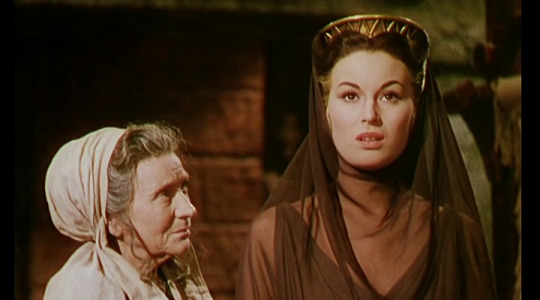
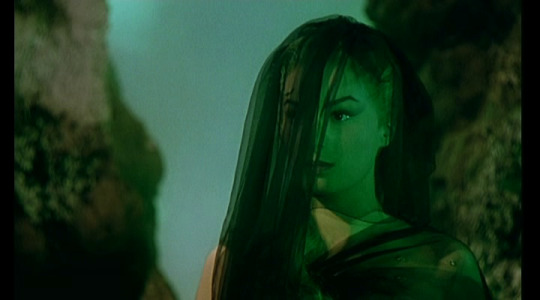
All in all, this is THE classic of the Odyssey adaptations that needs no introduction.
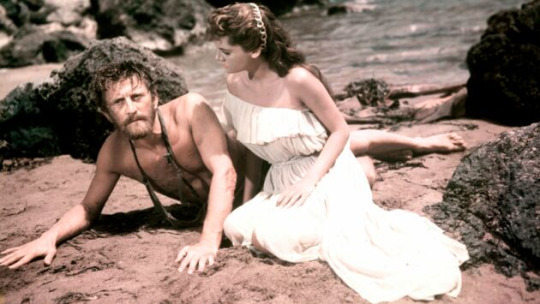
#odyssey#the odyssey#greek mythology media#other odysseys#odyssey adaptations#italian movies#greek mythology movies#ulysses#ulisse#1954 ulysses#circe#polyphemus#cyclop
14 notes
·
View notes
Text
Swamp Witch Travels: The Everglades
The Seminole War that never ended, a charm to Split a Storm and an Ancient Island. For centuries, the Everglades has been the object of wonder of many influential Floridian figures who each recognized its immense beauty and power. This River of Grass is a major center of life and biodiversity, as well as mysteries and Spirits uncharted, but will it still be around for the Swamp Witches of tomorrow?

The Everglades is going to shatter all of your preconceived notions about Swamps. It is a place of great power and duality. On one hand, this aqueous Land is covered in sparkling, clear, MOVING water. This water is the Life and Blood of the state, flowing from the Heart of the Everglades, Okechobee (Big Lake) The health of this ecosystem in turn affects the entire country. On the other hand, a place of Danger, Death and Rot, but for the purpose of Cleansing and Purification (not just rot for rot’s sake). As the water flows through this vast ecosystem, it is cleared of pollutants by plants and limestone while washing away scars left by man on this Land, until all is returned anew. It is a multifaceted, firm but gentle Spirit.
The Everglades is a union, a pact almost, between the Land and the Water to form the Swamp we know and love.
I am no stranger to the Glades. I was born and raised in the western Everglades, in the Big Cypress water basin. Fakahatchee and Picayune Strand were favorites of my parents as I was growing up, and we lived way out in the woods anyways so I always feel at home in the Glades. Many of my Spirits who are intrinsically tied to me, one might call a Spirit Guide or Angel, feel connected to Swamps and places where Water and Land converge. The Everglades is my home, but it is also a Spirit Ally, and a sacred place to the modern Indigenous Peoples of Florida, including the recognized and unrecognized Seminole and Miccosukee.
(PSA: this post will likely be part of a series only scratch the surface of the intricacies related to the Glades.)

Pa-Hay-Okee, “Grassy Waters”
Pa-Hay-Okee is the Seminole-Mikasuki name for the Everglades. I was blessed to be able to take a trip to see the Real Florida when I took an airboat ride with Buffalo Tiger Airboats, owned and operated by Betty Osceola. Betty is a conservationist and member of the Miccosukee tribe, located in the Eastern Everglades. The Seminole and Miccosukee are the descendants of various groups of Florida’s Original People from all over the state. The relationships and history of Florida’s Indigenous groups is complex. Before colonization and to this day we have had multiple groups who all have different beliefs, cultures, origins, and relationships. Today, we have various groups who are federally recognized as well as both Traditional and Reconstructionist groups who don’t seek recognition from the government, the most well-known being the Traditional Seminoles in Big Cypress.
Certain aspects of Seminole culture predate colonization, like the Chickee and some hunting techniques, while others, mainly linguistic and spiritual, are the result of groups joining together or adapting to new circumstances, such as patchwork. Many of the Seminole can trace their ancestry to groups in North Florida and surrounding states. These groups would live in various parts of the State, including the Everglades, at different times of the year following routes taken by seasonal migrations of game and water.
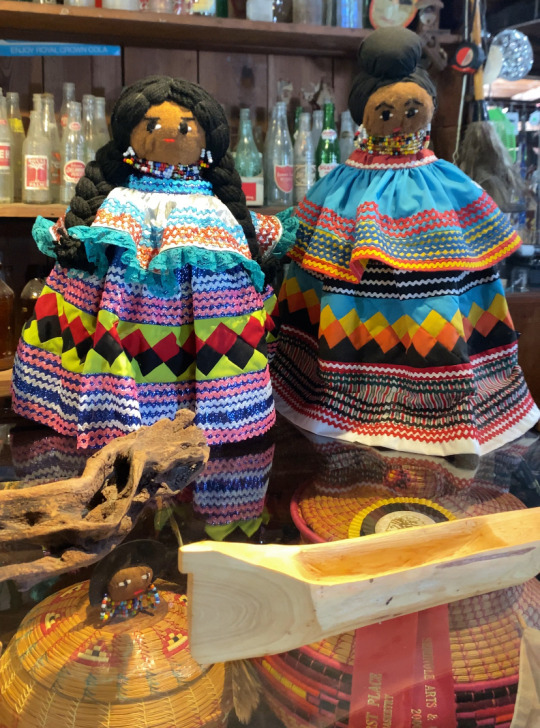
These people were forcibly removed, pushed South or murdered so their land could be taken in a conflict known to the United States as the First, Second and Third Seminole Wars. As they were pushed South, they encountered and assimilated various remaining populations of Pre-Columbian groups like the Calusa and Tequesta.
If you ask the modern members of these tribes, they will tell you it was a single war that is still being fought to this day, although with lawyers instead of weapons. You see, the Seminole and Miccosukee still have never signed a treaty with the US, and continue to have to fight for their Sovereignty and Land to this day. This has earned the Indigenous People of Florida the title of the Unconquered Peoples. Today, the tribes maintain traditional ways while also dealing with ever-encroaching settler beliefs and people. They still live off the land, but through the lens of eco-tourism most often rather than through subsistence living like many elders lived in their youth.
On my airboat trip, I got to stop and walk around Tear Island, a place where two Indigenous families began living in the 1800s and then abandoned in the 1920s. Being on these far off Islands, surrounded by the swamp and only accessible by boat, is where I feel most connected to my own Indigenous Taino ancestors, who would have traversed this same place but in a dugout canoe rather than an Airboat. The spirits of generations of people who lived and passed on are still here, within the water and trees, but also gathering around the cooking chickee when a fire is lit by their descendants.
High Tide at Chokoloskee
Known as the Western Gateway to the Everglades, we have Everglades City. It borders the Big Cypress Preserve and is a great place to stop to visit the Museum of the Everglades. The first settlers came here in the 1800s, it was incorporated in 1923. Past Everglades though, lies Chokoloskee. An Island with a Seminole name meaning ‘Old House’. This Island was only reachable by boat until 1956 when the bridge was built. John Weeks, the first permanent settler of Naples was one of the first settlers here as well. Before that, it was inhabited by the Calusa for more than 1,500 years.
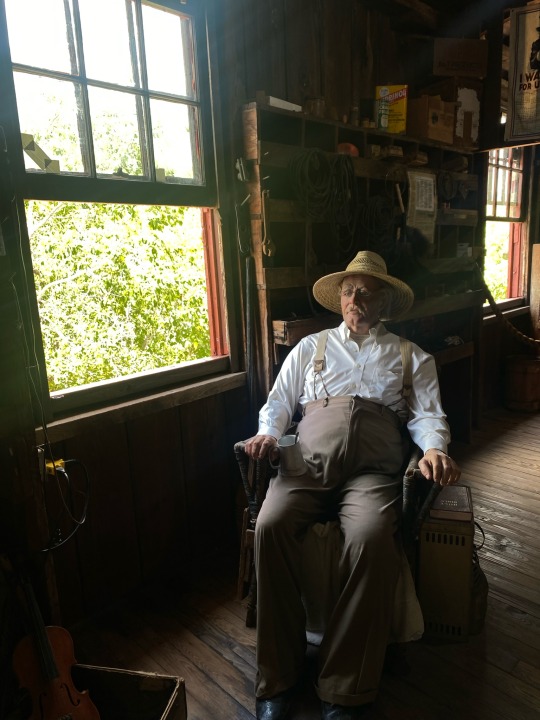
Stop by HavAnnA Cafe on your way to the southern tip of the Island where you’ll find a large red building on stilts. This is the Smallwood Store. Founded in 1906 by Ted Smallwood, this store was one of the only places Indigenous and White Floridians could go to trade for necessities. Ted Smallwood was a well-known ally of the Seminole and Miccosukee peoples, even learning to speak the language. Today, his granddaughter runs the store which is a museum and gift shop. There is even a replica of Ted himself, pictured above.

This history of this store and island is long, and tragic. A nearby massacre during the ‘Third Seminole War’ caused the remaining Indigenous people here to flee the Island. Later on, a famous murder of a well known criminal happened right outside the Smallwood Store. You can read more about both, and the 100 year anniversary of the building being raised here.
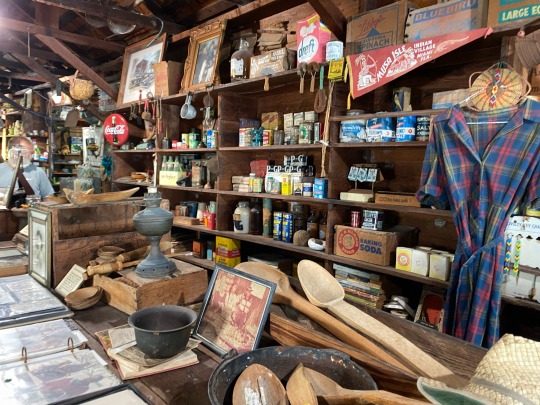
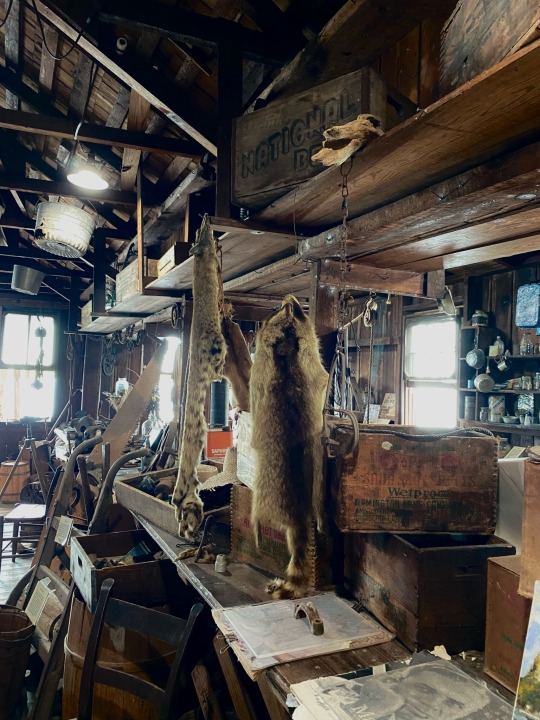
This is also a great spot to see where the fresh water of the Everglades meets the saltwater of the Florida Bay. Definitely give this place a visit.

Splitting Storms: An Indigenous Folk Protection Charm
For some time now, I have noted the striking similarities between Seminole and Taíno beliefs around Twins and Weather. We even share a simple protection charm to ward off a bad storm I will share to you all.
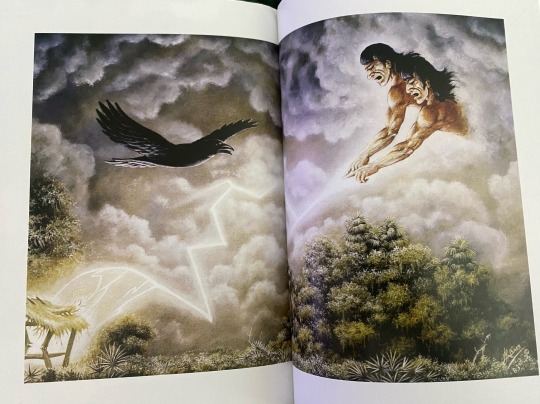
In Seminole belief, Twins are intrinsically tied to the weather. Many elders believed that keeping twins together can be dangerous, and they should be raised separately. To them, one is Thunder and the other is Lightning, even going as far to saying that having two twins in the same chickee can cause it to be struck.
In Taíno myth, we have two sets of twins associated with weather. Boinayel and Marohu are the Cemi related to the Wet and Dry seasons, Boinayel being the Raingiver and Marohu literally meaning “Without Clouds”. Then we have the ones who I would say share similarities to the Seminole Twins, Coatrisque and Gautaubá. These are Twin sons of the violent aspect of Atabey, known as Guabancex, Cacique of winds. Coatrisque is torrential rains, while Guatauba is Thunder and Lightning himself.
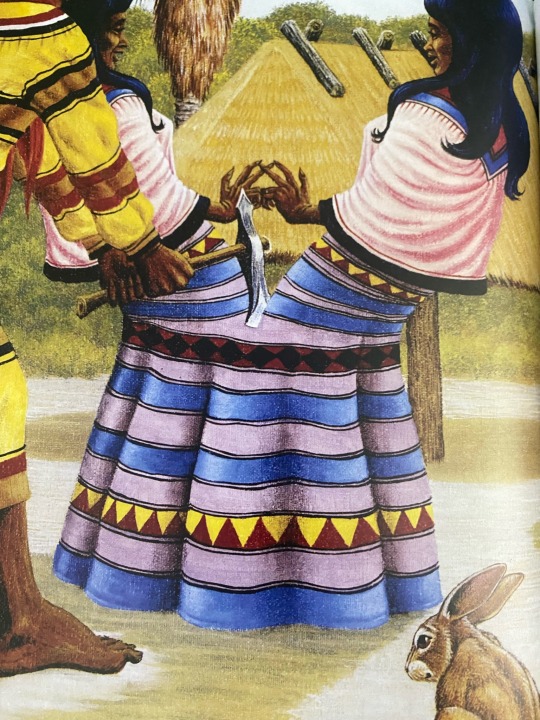
The charm is very well documented in both groups, as well as many others, and very straightforward. It’s the underlying belief that makes these two charms so similar. The linked article from earlier even includes a brief explanation of it.
Basically, when you know a big storm is coming, you want to place an axe in a spot on the front of your house, usually on a piling or piece of the roof that extends below the ground. Tie it down if you wish, for the winds. If you can, do it so the blade looks like it is coming down on the storm. The goal is to split the storm so it goes around the house. If we look at the myths, it’s clear the axe is there to split the Twins from each other, forcing them to go around the house, leaving it protected.
In the Caribbean, in practices like Lúcúmí and Palo Monte, we see the use of Matari, ‘Thunder Stones’. Genuine thunder stones from the Caribbean are actually said to be relics of Taíno axes, shaped like a tear drop almost, either passed down or found and used for various purposes, one being to ward off Lightning and Thunder!
Will Your Kids Know the Glades?
The Everglades are vital to my spiritual practice and lifestyle, as well as that of thousands of other Floridians. Even if you don’t live in the Swamp, its health affects the entire country.
Today, the dangers facing the Everglades are almost as abundant as the dangers inside it. Overdevelopment threatens the entire state. Just like we saw with Split Oak Forest recently. Environmental Protections seem to mean less and less because they don’t have the teeth to defend themselves. Included in these threatened protections is the sovereignty of the Seminole and Miccosukee Tribes, who just had to fight to keep Big Cypress as a preserve so they can continue their traditional use. They are fighting to hold onto their Land to this day.
All while threatening the Traditional Use by Indigenous Peoples, they continue to allow oil drilling even approving new projects within Big Cypress. The Army Corps of Engineers also heavily harms the environment every year through mismanagement of Okechobee and of the water levels within the Glades. It is up to everyday Floridians to fight to protect and better manage this precious natural resource before its gone forever. It is up to Witches all over to be stewards of our Lands, wherever that is. For us Florida Witches, we need to organize, donate and hex our politicians.
Luz 🕯️
#witchcraft#florida#bioregional animism#bruja#brujeria#florida witch#santeria#swamp witch#witch#traditional witchcraft#folk witchcraft#folk magic#folkloric witch#folk witch#espiritismo#santería#caribbean#everglades#animism#taino spirituality#taino#indigenous#cuban#witches#seminole#miccosukee#big cypress
25 notes
·
View notes
Text
Lucifer
Lucifer is a Latin word coming from the words lux, meaning light, and fero, meaning to bear or to carry. Literally translating to light-bearer.
Lucifer as a Roman Deity
Lucifer has had many faces throughout history. One of these being the Roman deity of the morning star, or Venus, considered the male equivalent of the goddess Venus. He is attributed to being the god of enlightenment and illumination. Lucifer is often depicted carrying a torch, and said to be equal in beauty to the goddess Venus. Due to being the morning star, I can also see Lucifer being associated with war as well. Especially considering his association with learning and knowledge, as well as that Venus also historically had war epithets.
In the Greek pantheon, they separate the morning star and the evening star into two seperate deities, being Phosphorus/Eosphorus and Hesperos. Eosphorus meaning “dawn-bringer”, and Phosphorus meaning “The bearer of light”. Phosphorus and Hesperos are the sons of Eos, Goddess of dawn, and Astraios, God of dusk. Phosphorus is the father of the Hesperides, nymphs of the evening time and light of the sunset.
Lucifer in Abrahamic Religions
Historically, Lucifer was never mentioned in the Bible at all. His name being associated to Christianity nowadays is due to a mistranslation of a poem about a fallen king. However, he is a big part of Christian culture now, and there are myths associated with him.
Lucifer was said to be the most beautiful and intelligent of God’s angels. He was God’s right hand. Until he defied God. There are many different versions of the fall of Lucifer.
One version of this story says that Lucifer became overly prideful of himself, his beauty, intelligence, power, that he thought himself worthy of being worshipped equal to God. Because of this, God cast him out of heaven.
Another version is that Lucifer was jealous of Jesus Christ. He gathered the angels and brought forward the idea of worshipping him instead of Jesus. Some of the angels sided with Lucifer, while others did not. There was a meeting between God, Lucifer, and all of the angels in which God said that their rebellion was unforgivable. There was a war between the two sides, but ultimately God and his angels won. Lucifer and the angels who followed him were banished from heaven.
Lucifer in Modern Witchcraft
In more modern witchcraft, there is a tradition which states that Diana, queen of witches, created Lucifer when she split herself into two pieces, darkness and light. She kept the darkness for herself, and Lucifer kept the light. Lucifer and Diana also have a child, Aradia. In this tradition, Lucifer is seen as the god of light, and masculine energy. One of the most influential sources for this tradition is The Gospel of the Witches by Charles Godfrey Leland.
Lucifer in Demonolatry
In demonolatry, Lucifer has many titles. Prince, King, Emperor, Lord. Lucifer is a demon of transformation, enlightenment, awakening, self-discovery, self-empowerment, and more. He is usually attributed to the element of air, and also pride.
Lucifer’s Associations
Anything with the * symbol next to it means that it is my own UPG.
Animals:
Snakes
Rams
Peacocks
Corvids (crows, ravens)
Cats
Spiders
Moths
Colors:
Black
Grey
Gold
Red
Teal
Blue, especially pale blue*
Purple*
Crystals:
Obsidian
Onyx
Hematite
Celestite
Seraphinite
Garnet
Sunstone
Clear quartz
Carnelian
Ruby
Copper
I am aware that copper isn’t a crystal.
Plants:
Apples
Pomegranates
Roses
Cinnamon
Cloves
Lavender
Blackberries
Sage
Black pepper
Garlic
Lilac
Spicy peppers*
Other:
Stars
The number 7*
Spring equinox
Autumn equinox*
Offerings
Strawberries
Blackberries
Chocolate
Apples
Pomegranates
Honey
Spicy foods*
Sweet things, especially baked goods
Juices, especially apple or grape
Coffee
Roses
Feathers
Devotional Acts
Shadow work
Learn about the sciences or the arts
Create art of any kind
Face your fears
Learn about any of his associated animals
Magical workings, especially those that fall under his sphere of influence
Learning in general
Developing your psychic abilities and spiritual senses (the clairs)
Spiritual progression
Anything marked with the symbol * means that it is my own UPG
241 notes
·
View notes
Text
Top 5 painters/artists
5. Sandro Botticelli: Mainly because The Birth of Venus awoke something within me at age 6.

4. Alphonse Mucha: Yeah, I’m basic. Art Nouveau is pretty and a great source of inspiration.

I just think they’re neat.
3. José Guadalupe Posada: You know this guy, he made La Catrina!

(Yeah, that’s from him, he wasn’t the first one to draw funky Mexican skeletons, but he made the most representative one. This is why I find it so odd whenever I see someone claiming that painting your face as a Catrina is “cultural appropriation” since it has nothing to do with our “ancient traditions”). He made his lithographies for newspapers and popular publications. His art is a showcase of Mexican daily life during the Turn of the century.

(This is from an article about an “scandalous” ball held by gay men, half of them in drag, a very influential event in Mexican LGBT history.) Also, more funky skeletons:



2.Remedios Varo: A Spanish surrealist painter who later migrated to Mexico. Her paintings are full of symbolism and they have an overall cool aesthetic.


1.Francisco de Goya: You know…



All his art is very expressive. The themes of his paintings go from the Spanish Royal family to the Spanish daily life and the Horrors of War.



My favorites are the Caprichos. They can be pretty scary. Here, have some monsters and witches.


17 notes
·
View notes
Text
This blog is about some history and my journey through Satanism, so I think it's a good time to stop calling myself a Satanist. I haven't found God, he doesn't exist. I'm not turning a new leaf, I'm just at the point where it is a budding dogma that can't get it's head out of its own ass.
If I say I'm a Satanist, three things come to most people's minds and I have issues with all three and it's not that important of a label for me anymore. The Devil is tempting me away from human concepts of his philosophy and majesty. I love the Devil, but the modern interpretations, omit much of the beautiful and influential literature, are horse shit.
1. Am I a member of the Church of Satan? No, because all I have ever done is argue with members that cannot admit fault. Even if you point it out in their literature, they always have an argument. Sometimes it makes sense and I understand better, but often it's just because they have brainwashed themselves into believing their own drivel. Sounds a lot like zealot Christianity.
2. An I a member of The Satanic Temple? Also, no, I am not. Lucien Greaves has a backround in Far-Right ideologies and even prompted the ACLU to defend a known White Supremacist in the early 2010's because, "Freedom of Speech." Well, Hate Speech is not, nor should be, protected under law because it's very existence is about taking right away from minorities, even to the point of violence. He did 'apologize' but, well, watch the video. It will point you to some nasty truths of the Temple.
youtube
You don't even have to watch the entire thing to get the point, but probably should to show support to the creator.
They are also based on double standards, much like their forefather, the Church of Satan. "We're atheists and we don't believe in magic!" Then why is Shiva Honey making money off selling magical products? They consider it ritual for psychological purposes... in chaos magic we call it the Paychological Model of Magic.
Just to be nitpicky, they sued Netflix for having a similar statue of their Baphomet in The Chilling Adventures of Sabrina. That's a waste of money and time for the causes that matter. I guess we should just conjure Eliphas Levi and have him sue the Satanic Temple!
I'm also not an athiest.
3. Then I'm a Devil Worshipper! Not exactly, because I don't believe in gods in that way. They are not anthropomorphic creatures, ancient ancestors, or any such thing to me. Gods, in my practice, exist much like consciousness does. We don't know what it is, how it is, why it is, or it's full potential, we just know that it is. It is also amorphous and abstract, no face, no body, no emotion, just something that exists and from time to time interacts with our objective universe.
Maybe I should use a rock as an example. It exists. It has no real purpose. Much like a god, it is damn near eternal, hard to break, and observes and remains until someone moves, buries it, or breaks it. Maybe a mountain or the ocean are better examples. Vast, myth inspiring, but they are not conscious like humans are, but they are powerful generators of myth and magic.
Satanism has had its place in my life, a very important one, but to consider myself a Satanist is to lie to myself and is not a battle I care to have with others. To reitirate, I still love the good ol' Devil and his concept as the Witch Father and various other deviations, but the Devil is not Satan and modern Satanism hardly acknowledges the Devil and their ilk in the way I have come to know them.
#mutant sorcery#syzygy of psyan#elder itch#sub spiritual bacteria#absurd#satanism#surrealitch#666#black flame#the devil#youtube#satanist#stop arguing over stupid shit and kiss Satan's asshole like a good poser
5 notes
·
View notes
Note
your cardverse sounds interesting, could you talk a little about it?
Thank you so much for the interest! I would be more than happy to tell a little more about my Cardverse AU!
However, I want to warn that it was heavily inspired by oumaheroes Cardverse AU, please check it out! To be more precise, I absolutely loved the idea that at some point in time, Arthur was a royal advisor and that some shit is happening in Kingdom of Hearts. At that point, the similarities end.
Basic Worldbuilding.
The existence of their world and the birth of magic are associated with the life and death of the Great Dragoness. She was like a goddess who helped humanity giving them her gifts of healing and protection. Her power could end the famine, could calm the Earth but it could not make an immortal being.
Thus, after some time she unfortunately passed away but not before giving her presents to seven humans. Four of them were chiefs of their respective tribes and three of them were heads of their families. To the tribe of the cold and freeze, she gifted her eyes so they would always see through the lies. To the tribe from afar, she gifted her heart so their blood would always warm and any wound could be healed. To the tribe of the sun, she gifted her scales so nothing would ever destroy them. To the tribe of the night, she gifted her claws so not even a stone would withstand their attack. And to the heads of the families, she gifted her blood so her power would always be in their bodies.
And only after that, she passed away. Leaders of the tribes decided to divide their new powers between their people. The most important got more, less important got less power. This way the card system was born, and with remaining power returning to the original owners, Royal Cards were born. Even though, Royal Blood still contains mystery power that makes the card owner even stronger.
Heads of the families did not have enough power to do the same with their magic, so it remained only through their own blood. This way witches and wizards appeared who needed no card to cast even powerful spells. They had a deep understanding of the world’s magic, thus for a long time they were helping the Royals.
Kingdom of Diamonds.
The people of Diamonds have a powerful protection out of their magic. Their shields are as strong as diamonds themselves, making them almost invincible from the attacks, diseases, catastrophes, so they rarely have been attacked in history and their King rarely has been poisoned. The stronger cards could be protected even from the plagues, but even common one could guarantee some protection.
The past King was a violent man who started multiple discriminatory policies, messed up diplomatic relations with other Kingdoms, especially with the Kingdom of Clubs, and led the kingdom of jewels and gems into despair. One of his policies was Witch Trials that killed entire magic families and sent away the survivors. It surely created a new problem but the one who was left to deal with that was Francis, his nephew. But back then, he just preferred not to have an entire different class of the citizens who could possibly question his authority. During these trials Annisse Kirkland, the head of the Kirkland family, was violently killed and burned.
The current leaders are Francis Bonnefoy and Lili Bonnefoy-Zwingli. The King is the most influential monarch of his time not only because he is the eldest one in the new generation, but also because his power allows him to hold shields covering almost the entire Kingdom of Hearts. However, not a lot of people know, but Lily could guess that Francis sacrificed not only his magic to put and hold this shields. He with his young wife are seen to be extremely reliable and strong in public, even picking up the name of The Solar King but The Court holds a big challenge for them at times of their weaknesses. It is hard to see but the Civil War risks to break within the Palace.
The Past Advisor was Arthur Kirkland, secretly a witch. He was sent to the Palace at a very young age with an important mission and was raised as the next advisor for the new king. He indeed became one and together with Francis they were able to slowly start a progress in the kingdom, returning it to its prosperity. He was very well-known for his stubbornness and determination, possibly his power was something that young King needed to become the one he is today. Public does not know why he suddenly left but did not really question. After all, it is quite a hard jibe, so maybe he just could not handle it?
The current advisor is Remus Fernandez. He was the advisor before Arthur but after his leaving, he returned to the position. Thanks to blood ties with one of the witch family, has a very long life and so, has a lot of experience, and a little bit of carelessness. He is continuing Arthur’s policies and keeps an out on the Court. Has two sons: Antonio Fernandez who is a general of the army and one of the main leaders in the case of emergency, and João Ferreira who is the captain of the Royal Navy. Both of them are good friends with Francis.
Overall, the current Kingdom is recovering from its past mistakes and seems to be pretty successful.
Kingdom of Clubs.
The people of Clubs have an intimidating power of mind control. Depending on the power of the card, they could look deeply into someone’s mind and the most powerful cards could even control people. As a result, Clubs rarely communicate verbally (why say it when I can hear it anyway?) and outsiders may think of them as extremely rude due to them reading minds.
The past King was coronated for a very short period. She barely spent some time as a King despite her desire to continue her father’s legacy continue to improve the kingdom, and create stronger diplomatic relationships but quickly lost her crown. No one knows what happened to her and why did it happen but some speculate that she knew something. Something that she was not supposed to.
The current monarchs are Ivan Braginsky and Elizabeta Hedervary. King was coronated pretty early and in quite a rush, almost the same way the Queen was chosen to accompany him. Not a lot of things are known about them but with their reign, the kingdom became severely isolated and propaganda against other kingdoms appeared. It is hard to avoid since anyone could read your mind and just tell the authorities about it. The King and Queen almost did not appear in public and did not comment on their policies.
The past advisor was Feliks Lukasiewicz. He appeared and disappeared together with the past King so not a lot of information is known about him. Only ones who were close to him would say with no hesitation that despite his being eccentric, he truly wanted to make the kingdom better and he could not be dead. He is too strong for that.
The current advisor is Roderich Edelstein. Once again, there is almost nothing known about him, he barely appears in public. Before his position, he was a pretty well-known musician and his close circle knew of his passion to attempt in cultural revolution. He hoped to promote the culture of the Kingdom of Clubs, give more opportunities to artists, etc, but something went wrong.
A close friend of the past advisor, Toris Laurinaitis did not believe that his friend’s disappearance that so coincided with the unexpected King’s demotion was just an accident. He firmly believes that something deeper going on in the Court and possibly, King, Queen and their Advisor are not even themselves. Imposters? Puppets? He is not sure but he started his own Resistance that aims to uncover the secret of Clubs and bring a better future, meanwhile fighting the oppression. His other friends Eduard von Bock and Raivis Galante joined him.
Overall, the clouds are all over the kingdom and who knows what awaits them.
And that’s it for a first part!
#hetalia#hws#hws england#aph england#hws france#aph france#aph#aph fruk#hws spain#aph spain#hws portugal#aph portugal#aph liechtenstein#hws liechtenstein#aph hungary#hws hungary#aph poland#hws poland#aph lithuania#hws lithuania#aph austria#hws austria#cardverse
17 notes
·
View notes
Text
New Gossip Girl 2021 ocs
All I'll say is blame @cecexwrites for enabling me
(gossip girl besties I'm also very here for crossovers 👀 @the-witching-ash @manyfandomocs @ginevrastilinski-ocs @cecexwrites )

Aislin Hart in Social Suicide
Lowkey James Locke 2.0 but her mom doesn't love her; parents pushed her into performing from a very young age, bit of a child star (child actor to popstar) to trainwreck situation Homeschooled for most of her life but starting high school (or as a sophomore) there was a push from part of her team for her to go to a real school for “relatability” reasons, gets enrolled at constance billard, starts to befriend the gang but then lockdown happens and she is pushed by her parents to be basically 24/7 content machine no matter what, just as she hits her breaking point, schools reopen for real She's trying so hard to be caught in a scandal where she'll be told to "take a break from the public eye" and not have to be 24/7 content creating but it keeps not working and she's going insane about it



Chloe Branson (Anna Cathcart) & Nora Branson (Lana Condor) & Milton Milo Aston in Fortune & Fame
The Branson sisters gre wup middle class. Nora is used to a relatively normal life, mostly raised Chloe because their parents were always working. Their parents recently got very very rich from an app her mom made or something details still tbd, kids are transferred to Constance, parents are still never around. Nora befriends some of the core group but thinks they’re very out of touch, Chloe has just started high school and gets totally swept up in all of it Milo Aston is Nora's eventual love interest, popular jock, close with Aki & Obie because of sports, everyone thinks he’s this spoiled rich brat but actually his dad is rich & pays for school but he grew up with his mom who was solidly middle class and lives outside of the city. His parents agreed for him to start living with his dad as a sophomore because St Jude’s had a better chance of getting him sports opportunities in college, he got very caught up in the flashy lifestyle for a while but has generally settled down until gossip girl gets involved

Gabriela Caparros in Reputation
Rafa's younger sister, parents are very not involved in her life, Rafa is semi raising her but also very emotionally absent so Gabriela is used to just taking care of herself, she struggles to open up to anyone let alone to ever let anyone help her. She and Max have had an on-and-off fling for a long time before he set his eyes on her brother. Gabi knows Rafa and knows his tendency to sleep with students just after they become of legal age, tries to warn Max away from him but Max thinks that she’s being petty & jealous

Jazz Ellis in Doll Heart
Davis Calloway had a history of getting women drunk and coercing them into sex: he didn't know he got one of them pregnant. Jazz's mom had been Davis' assistant and an aspiring singer, one too many late nights working led to him offering her a drink, then another drink, until Jazz's mom was wasted, they had sex, and Jazz was conceived. Needing an escape from New York, her mom moves to LA andstarts her music career there instead. Jazz grew up between LA & being on tour with her mom, they moved to New York only three months before everything went into lockdown. Pre-lockdown Jazz became a part of the group, not knowing the Julian connection. She learns the truth during the pandemic and returns to school carrying this heavy secret but not knowing how to bring it up, or even if she should

Sasha Davenport in Material Girl
all vibes so far but Paris & Obie's third musketeer, daughter of a very influential lawyer and equally influential politician who expect constant perfection to maintain the family image
#maddie talks#new oc#new idea#gossip girl oc#aislin hart#social suicide#about aislin#chloe branson#about chloe#nora branson#about nora#milo aston#about milo#fortune & fame#gabriela caparros#about gabriela#reputation#jazz ellis#about jazz#doll heart#sasha davenport#about sasha#material girl
7 notes
·
View notes
Text

Smaller wizarding British schools (p8)
Mayfair's institutes, very selective schools established in 1860 divided by gender but shared extracurriculars such as horse riding and ballroom dancing, along with social gatherings both in and out of school. Today, a joint college for the influential due to the decrease in students after over a hundred and twenty years.
Madam Orpington's Institute for Young Witches
Named after Minister for Magic Evangeline Orpington (1849-55) who truly boosted Wizarding Britain into the Victorian Age despite the initial public backlash. The school woman staffed and run, they specialize in Charms, Dance, Choir, Etiquette, and Domestic Arts. Wiztennis and Wizbadminton are the most girls are encouraged outside horse riding.
D. McPhail's Institute for Young Wizards
Named after Minister for Magic Dugald McPhail (1858-65) who saw calm in flourishing Victorianism and rising upper middle class. The school is mainly male run but have woman staff in their respective positions. They specialize in History of Magic, Latin, Charms, Defensive Arts, and Transfiguration. They have proud Wizcricket and Rugby teams against the other schools (Quidditch is a part of the Flying Club due to size needs, sky visibility, and talent).
Both schools offer places to the influential and often wealthy from age thirteen. Students board weekdays (now full time) if they can pay but many come by day.
They wear Victorian styled robes to honor their roots yet the secondary school declined with terrorism in the 1970s and 1980s, losing students on the dangerous streets or transferring to Hogwarts or elsewhere. Despite both having moved to a country estate back in the 1940s, the loss of students was too great.
The two schools combined as a college by the late 1980s as the Wizarding Queen's Institute (W.Q.I.). Now accepting those over sixteen with high O.W.L. scores, they enjoy the same reputation the schools were founded on.
(Photos from Pinterest.com)
12 notes
·
View notes
Text
Part I. Phantom and Crimson Solitaire but the part where Dr. Eve is reading where the mission is situated + history + collectibles

Instead of Dr. Pinkie being the actual loremaster that I expected given their superiority in everything that ever happens with the game, I have reclaimed the role (at least when it comes to IS2) and that includes all my assumptions about whatever has happened and is happening in it.
First of all, while re-reading the previous post I made about Shalem and Phantom, I realized that, wait a minute, where the hell is this even situated?
Apparently, Gaul. Which I have been able to understand is basically France, but gone because they were too sassy. Something of that sort. My understanding before versus now.

Second of all, it's not Gaul itself, the place we stumble into is a castle in Calais-Blason. That is a part of Gaul formally, now it is a part of Northwestern Victoria. After the war nothing was left of it because of devastation and because all the people either fled or died.
Phantom was told by the Crimson Troupe that he was born in Calais-Blason and was taken by the Troupe after a flood Catastrophe swept through the area.
We don't really know if that's true or not though.
Then there is a description as we enter the loading screen of the castle that states:
A castle hidden within the woods constructed under the auspices of a Gaulish noble who perished in the war a few years after its completion, leaving it derelict. But a mysterious group has been calling it home recently...
I'm about to eventually figure out who the noble is and we know that the mysterious group is The Troupe. Their 'Blood Diamond' is Phantom and during some investigating of his memories, he was attracted my goodness knows what machinations to re-visit his old home. Our job is to, you won't believe it,

Gaul's story in general is as straightfoward as it can be based on the Wiki. It was an empire ruled by a family of Liberi located between Victoria, Ursus, and Leithanien. Gaul was so influential that its grand nomadic capital, Lingones, was nicknamed the "Capital of Terra".
Gaul was primarily known for its expansionism, and it reached its peak during the reign of its last Emperor, Corsica I, following the implementation of the "Second Economic Reform Act," a new codex that drastically strengthened Gaul's military.
No surprise there, since Corsica I came to lord over the country because of his military prowess and the rewards he's gained over the years of serving. He was putting all of his military power into expansionism when demand had grown more than what the land's riches could produce. Like any time in history, he thought that it's time to knock on their neighbours' doors and tell them their time is up.
Big mistake. What kind of professional, a military veteran looks at this man and in return says 'I can take him'. Like any monarch, outraged by the Gaul's proposition to become a vassal state, the Witch King refuted by turning all Gallic envoys in Leithanien into lifeless statues. That's how we ended up with the Gallo-Leithanian War.

---
Pinkie: "I'm starting to believe you didn't read the story of Lingering Echoes." Me: "Which... I didn't." Pinkie: "There you go!" Me: *Appalled* Pinkie: "We will pick up the pieces left during Zwillingstürme Herbst."
---
That wasn't enough. Gaul also attempted to invade Victoria – which almost resulted in a complete defeat and annihilation of the latter, forcing Victoria to give up its northwestern colony that would later become Columbia.
In 1053, Victoria, under the leadership of King Frederick III, formed a coalition with Leithanien and Ursus to oppose Gaul, leading to the Battle of the Four Emperors. The war ends with Gaul's total annihilation, Lingones (the Capital) is wiped off the map, and the victors taking over Gaul's former territory.
The fall of Gaul is often considered the most tragic event in Terra's history. During its time, Gaulish culture was considered influential, but are now slowly fading to obscurity. Some collectors sought to preserve Galic relics while bakers and wineries tried to replicate the original Gaulish formula, but the latter are unable to match the original. With their homeland lost, many Gauls were scattered across Terra, and their nobilities were forced to serve the victors. Still, there are some Gallic restorationists who attempted to steal Gallic relics on display in museums in order to rally the surviving Gauls and bring the empire back to life.
Which leaves a lot of questions for where the current Victorian storyline is going to go, because I think most of the land and the people now consider themselves victorians. Granted, their descent remains marked, so here's a list of Gaulish people.
... Clément.............

To note before I go reading the collectables, here's the most metal thing I have ever seen being done in Arknights so far.
The Last Empress-Consort of Gaul: The wife of Corsica I, also known as the Natator. She chose to stay in the Gaulish imperial palace upon hearing the news of Corsica I's death and killed the invading enemies in a suicide attack by plunging an Originium shard into her body.
---
Pinkie: "So can we assume all catboys are Victorian?" Me: "Uh-- Well, I think so?" Pinkie: "Because, we already know all Perro are from Bolívar, and Ursus is a thing." Me: "Yeah, sounds the part actually. Officially, all Felines are Victorian."
---
Collectables I found cool, so i want you to know.

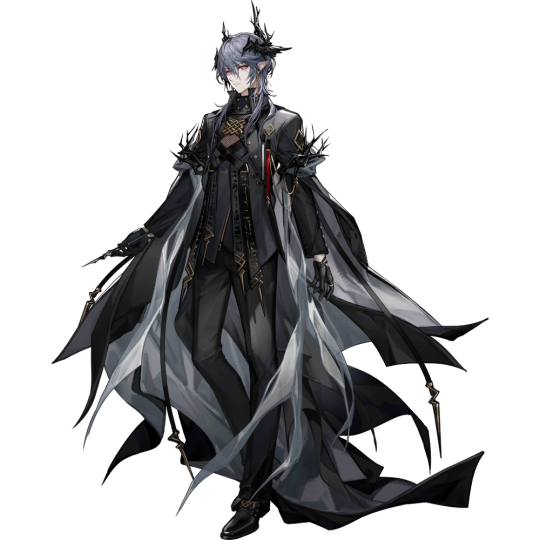
Banshee's Kiss
Outsiders make extraordinary displays of bravery that far surpass their normal abilities. However, as one of the few male Banshees out there, this has become a far too common sight to Logos.
You could lie to me and tell me that belongs to Logos and I will believe you. I don't understand a lick of what this signifies though. Maybe it is connected to death, maybe it is connected to music, or to the fact this is a relic of the Death Cult (The Troupe).
---
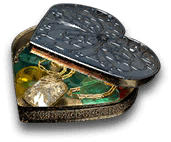
Actor's Jewelery Box
A box containing all kinds of shattered jewelries. The young lead actress wore these jewelries and stepped onto the stage, in the end falling from its highest point.
Absolutely terrible, actually. Nobody will understand the reference but this reminds me of how Lumine fell off the stage in Off-Script by Jules and Amarettiii. Great scene, wonderful timing in what is happening before that. Genshin brainworms shall always swarm me when Arknightsing and vice versa.
---

Fissured Restraints
It seems this sturdy band was once used to restrain something terrifying… Help…
????????????????????????????????????????
---

Godmother's Token
A laurel of bones, the token of a Sicilian noblewoman. This symbol of order will smooth the turbulence of all desires, for conflict is not allowed. Genuine or counterfeit, it still demands you to kneel.
Laurel. Of. Bones.
Dude...
---

Worn-out Group Photo
Do you know someone in the photo?
These are Gopnik and Hellagur as far as I can see.
---

Writer's Tongue
The playwright penned his creations with a quill and his own blood, and for himself he devised an ending in which he perishes in a sea of flames.
Something something it has to do with the ending but I have not gotten to any ever thus... I will be reading that later.
---

'The Whisperer in Darknight'
A black vinyl. DO. NOT. TOUCH. IT.
I played Darknights memoirs, you have no excuse to keep me away from it. Unless it's... who collected Vynil out of the Penguin Logistics? Was it Emperor himself? Croissant? I don't remember but my hands are up, you can see them.
---

Gold-Plated Dice
The gold-plated die has one side representing life. As for the other nineteen sides…
---

Emperor's Favor
A very sharp letter opener. It was one of the favorite possessions of the last Ursus emperor, and as such it was very rarely used to actually open letters.

---

Silver Forks
One for dealing with actors who botch their performances, one for dealing with incompetent playwrights, and one for anyone who needs it. The Chief will not tolerate any mistakes on the table.
The more I learn about the Troupe the worse it just gets.
---

Damaged Revolver Cyllinder
She never capitulated, even after enduring countless trials and tribulations. Her muzzle belched tongues of flame that burned like an angry sun, and the glow above her head was brighter than the daylight itself. Buried here is Outcast, our friend.
Outcast? Who is Outcast? *Googles*
Oh.

---
Kryo: "She is past tense." Me: "She is a 'was'."
---

Rusted Razor
If you cut yourself with this, you know what will happen.
Is this allowed? Is... Is this allowed? What do you mean- Yes we all know what happens with a-- goodness me.
---

'Brilliant Lament'
His blood yet flows. He has never left this place.
Whose...? Whose???
---

White Flower Crown
A floral veil used in Vampire rituals. Its once vibrant redness has been sucked empty, leaving nothing only a pale white color.
Oh, pretty!
---

Dancer's Bracelets
The audience breaks into applause as the well-trained dancers waltz around the traps on stage. None of them are aware of the brushes with death the performers have just been through.
The trauma just continues. Thematic.
---
This is just a set of pastries without context, I love the food in Arknights.






---

Broke Mask
He’s wearing the mask. Is he the one who’s speaking or is it the mask?
Oooo it's Phantom. We Phantom enjoyers know when we see the mask.
#arknights#doctor of ri shenanigans#arknights event#Arknights IS2#Arknights Crimson Solitaire#phantom and crimson solitaire#Arknights Doctor#Phantom Arknights#Arknights Lore#Arknights Art#arknights operators#lore and stories#Arknights Victoria#Eve's Exploring#Dr. Eve is also terrified
19 notes
·
View notes
Text
The Origins of The Wolfman

The story of Universal's "The Wolfman" (1941) is one of the most iconic werewolf tales in cinema, but its origins are a blend of older folklore, literature, and mythology. The concept of werewolves has been around for thousands of years, long before Universal's monster movies.
Origins of "The Wolfman" Story
The 1941 film "The Wolfman", written by Curt Siodmak, introduced many of the tropes we now associate with werewolves, such as the use of silver to kill them, the transformation during a full moon, and the notion of the curse being passed on through a bite. While Siodmak invented much of this for the film, he drew from centuries of werewolf lore and mythology, weaving them into a modern narrative that fit the Universal monster film canon.
Who Invented Werewolves?
Werewolves have been part of human mythology for millennia, and there is no single person or culture credited with "inventing" them. Instead, werewolves have appeared in various forms across different cultures:
Ancient Greece and Rome: One of the earliest werewolf stories comes from Greek mythology. The legend of "Lycaon", a king who angered Zeus and was transformed into a wolf, is where we get the term "lycanthropy." Roman authors like Ovid also wrote about men turning into wolves in works such as "Metamorphoses".
Norse and Germanic Mythology: The Norse sagas and Germanic folklore also feature tales of men who could transform into wolves, such as the Viking berserkers who were believed to be able to take on the powers of animals, including wolves, during battle. The "Volsunga Saga" tells of men who wore enchanted wolf pelts and transformed into wolves.
Medieval Europe: In medieval Europe, werewolves were often linked with witchcraft and the devil. Many believed that witches could transform into wolves or other animals, and there were numerous werewolf trials in places like France and Germany, much like the witch trials. The fear of werewolves was often tied to religious and superstitious beliefs about the devil's influence over humans.
Indigenous Cultures: Indigenous peoples in North America, such as the Navajo, have legends about shape-shifters, often referred to as skinwalkers, who could transform into animals, including wolves.
How Long Have Werewolves Been Around?
Werewolf myths and legends date back to at least the ancient world, more than 2,000 years ago, if not further. The idea of humans transforming into wolves, either voluntarily or through a curse, has been a common theme across various cultures. Throughout history, werewolves have appeared in art, literature, and oral traditions.
The Epic of Gilgamesh (circa 2100 BCE) – One of the earliest known references to lycanthropy. In this Sumerian epic, the goddess Ishtar turns a former lover into a wolf.
"The Satyricon" by Petronius (1st century CE) – A Roman work of fiction that includes a passage where a man transforms into a wolf, making it one of the oldest literary depictions of a werewolf.
"The Metamorphoses" by Ovid (8 CE) – This Latin narrative poem contains the story of Lycaon, a man transformed into a wolf by Zeus, one of the earliest and most influential werewolf myths.
"Bisclavret" by Marie de France (12th century) – A French medieval romance about a knight who turns into a wolf. This tale is an early example of sympathetic werewolf stories.
"The Book of Were-Wolves" by Sabine Baring-Gould (1865) – One of the first comprehensive studies on werewolves, combining folklore, history, and mythology about lycanthropy.
"Wagner the Wehr-Wolf" by George W.M. Reynolds (1846-1847) – A serialized Gothic novel that tells the story of a man cursed to become a wolf.
"The Were-Wolf" by Clemence Housman (1896) – A short novel about a mysterious and seductive woman who transforms into a werewolf, blending Gothic horror with themes of gender and power.
"The Phantom Ship" by Captain Frederick Marryat (1839) – While the main focus is on a haunted ship, there is a notable episode involving a werewolf.
"The White Wolf of the Hartz Mountains" by Captain Frederick Marryat (1839) – A short werewolf story often included in collections of Gothic horror, with a sinister white wolf terrorizing a family.
"The Werewolf of Paris" by Guy Endore (1933) – A key influence on later werewolf films, this novel explores a man’s transformation into a werewolf in Paris during the Franco-Prussian War.
Films:
"The Werewolf" (1913) – A silent short film believed to be the first werewolf movie ever made. It was based on a short story by Henry Beaugrand called "The Werewolves", about Native American shape-shifting legends. Unfortunately, the film is considered lost.
"Le Loup-garou" (1923) – A French silent film with a werewolf theme, directed by Pierre Bressol.
"Wolf Blood" (1925) – Another silent film, this one blending early horror with elements of the frontier. It follows a man who believes he is becoming a wolf after receiving a blood transfusion from a wolf.
"Werewolf of London" (1935) – The first full-length werewolf film from Universal Studios, preceding "The Wolfman" (1941). It tells the story of a botanist who is bitten by a werewolf while on an expedition and transforms into a creature after returning to London.
3 notes
·
View notes
Note
Anne Boleyn and Alicent (either in F&B or HOTD) are NOTHING alike. Anne disrupted social order. Alicent represents the status quo. Anne is an “heretic” and a “whore”, Alicent represents order, tradition, conservatism. Anne is the most influential and important queen consort England has ever had and changed the country forever. No one mentions Alicent when they talk about the Dance of the Dragons.
“Anne Boleyn is one of the most controversial women in English history; we argue over her, we pity and admire and revile her, we reinvent her in every generation. She takes on the colour of our fantasies and is shaped by our preoccupations: witch, bitch, feminist, sexual temptress, cold opportunist. She is a real woman who has acquired an archetypal status and force, and one who patrols the nightmares of good wives; she is the guilt-free predator, the man-stealer, the woman who sets out her sexual wares and extorts a fantastic price. She is also the mistress who, by marrying her lover, creates a job vacancy. Her rise is glittering, her fall sordid. God pays her out. The dead take revenge on the living. The moral order is reasserted.”
https://href.li/?https://www.theguardian.com/books/2012/may/11/hilary-mantel-on-anne-boleyn
Anon's talking about this post.
This is an interesting way to talk about it. Thanks, anon.
#asoiaf asks to me#anne boleyn#european history#european queens#fiction vs reality#fire and blood#alicent hightower#alicent's characterization#fire and blood characters
10 notes
·
View notes
Text
When did the fall of Domino take place?
16 years ago? When Bloom was born and shortly after sent to earth? No, I would say it was centuries ago. And I will sum up some events of season 1 and tell you why.
1x2 Dufour talking about her youth:

To see how Dufour speaks for centuries since she was young, it still makes it logical that the fall of Domino also happened centuries ago and Daphne somehow managed to send Bloom through space and time back then. Dufour does not look as young as Bloom & Co, but definitely younger than Faragonda and Griffin. Which implies that the time where Faragonda and the Company of Light were still young was even longer ago. This leads me to the conclusion that the fight against Valtor, the ancestral witches and the fall of Domino may have taken place about a millennium ago. Which explains why nobody now knows that Domino was actually an influential and beautiful planet anymore.
1x6 Bloom finding out about the Dragon and Faragonda giving more hints:



This is a kind of creation story of the magical dimension. Nevertheless, Flora knows nothing about it and no one seems to know the dragon and the dragon flame itself anymore. Another indication that the fall of Domino and the loss of the Dragon Flame must be much further back.
Faragonda goes on:




I think one could assume that even girls like Stella, who aren’t very good at school, have knowledge about the most recent happenings in history. If Domino had been attacked 16 years ago, she would know and so would the rest of the Winx. The way Faragonda tells the story implies that the events took place long, long, long ago. And like normal people might have no clue about certain events in the middle ages, the young fairies do not know of the fall of Domino, which implies, that Domino fell centuries ago and Bloom must have traveled through time somehow and ended up with Mike and Vanessa in our timeline.
There are more hints in the next episodes, like Daphne being a historic nymph and so on, which I will add by reblogs.
#winx club#winxclub#winx#winx club analysis#winx club domino#bloom of domino#winx club bloom#winx bloom#winx dragon flame#dragon flame#planet domino#fall of domino winx
57 notes
·
View notes
Note
Hey! I know The Witching Hour is your favorite Anne book and I'm about to start it (I tried it a few days ago but stuff got in the way). I just wanna ask if you were sold immediately or if you needed a few pages to get hooked? And which chapter(s) is/are your favorite?
@adamnablelittledevil It took me a few chapters, yes--I hate Rowan. HATE her. Couldn't relate to her at all; but despite being this perfect genius, she made THE dumbest decisions, omg. But she's just like all the other Mayfair witches, thinking they're smarter than this all-powerful centuries-old immortal entity who they KNOW constantly lies to them, LOL. 🤦
IMO, Michael is where things get interesting; especially once he gets his powers & meets Rowan (Chpt 2,4 / Chpt 6). I love it every time he uses his powers in a big way & freaks out--it was a real bummer that on the show, Ciprien already has his powers & has no problems getting used to them. Plus he's already working for the Talamasca (they blended Michael and Aaron together); there's no sense of discovery or wonder or mystique/mystery; there's no outside perspective guiding the audience along--the closest we get is Ciprien's sister spying on their seance in the apartment. But Michael was just a normal guy--or WAS he...? 👀 (Michael is my favorite character in the Mayfair series. Ciprien's fine, but not what I was hoping for.)
My favorite chapter is when he goes into the attic and finds all of Marguerite's voodoo anatomy jars (Chpt 31). Another scene the show ruined for me; it was so dramatic in the book.
I also like all of the chapters about Marguerite & Julien Mayfair--arguably the two most influential witches for Lasher's development pre-Rowan; or at least the Talamasca's understanding of what Lasher wanted from the Mayfairs.
It's a loooong, slow book, but I love reading about the history of all 13 of the witches. It's just really good worldbuilding. And the mystery around Lasher just makes for a really well thought out ghost story.
2 notes
·
View notes